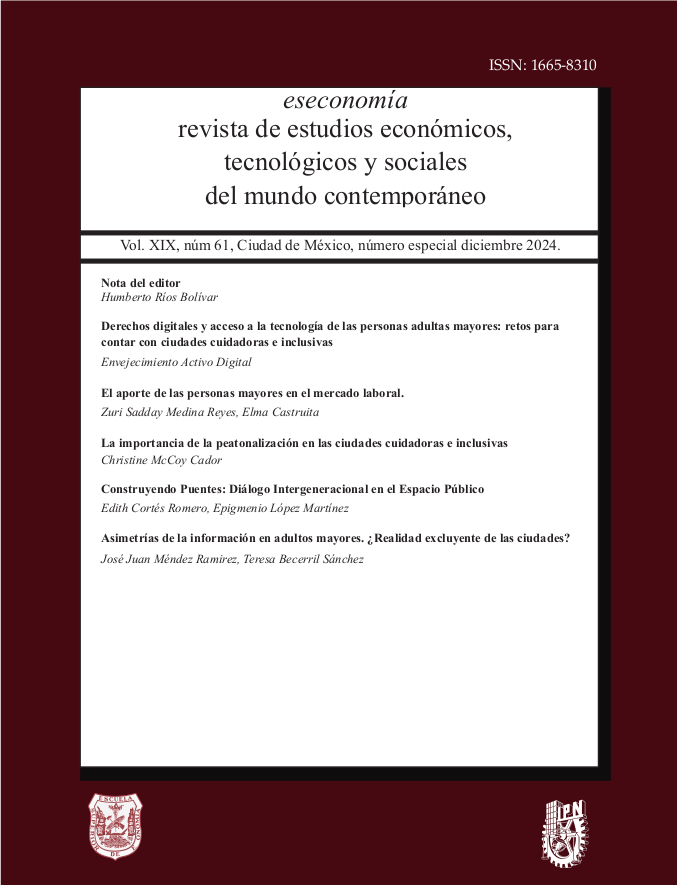The importance of pedestrianization in caring and inclusive cities
Main Article Content
Many people do not consider that walking through a city can be a source of pleasure. For many, walking is simply a means of transportation to get from one place to another. However, this activity has multiple benefits for both physical and mental health. Cities that promote active mobility become careful and inclusive spaces.
A caring city is one that focuses on taking care of its inhabitants and making it easier for them to take care of each other. These cities place people at the center of their urban decisions, adapting spaces to their needs, rather than forcing them to adjust to existing conditions. In them, public spaces convey security, are well lit and have the support of the community, which allows you to walk without fear at any time of the day.
In these cities, pedestrians are the protagonists, challenging the dominance of cars that generate pollution and accidents. Accessible and safe public transportation is prioritized, and the aim is to integrate different means of active mobility such as walking or the use of bicycles.
In Mexico, the importance of protecting the rights of pedestrians has been recognized, with the creation of the Mexican Charter of Pedestrian Rights in 2014. This charter establishes basic rights, such as crossing the street safely, enjoying an adequate public space and have infrastructure that favors the well-being of citizens.
Promoting active mobility, such as walking or cycling, contributes to physical and mental health. Walking daily not only helps you lose weight and strengthen the cardiovascular system, but it also reduces stress and promotes a state of general well-being. In addition, various initiatives around the world, such as World Car Free Day, seek to raise awareness about the damage that excessive use of cars causes to the environment and public health.
Healthy urbanism, a new trend in urban planning, focuses on designing cities that promote the health and quality of life of their inhabitants, prioritizing public and active transportation, improving pedestrian infrastructure and creating more sustainable and environment-friendly environments. people.
Cities must be cared for and designed with a vision of health, promoting more inclusive, safe and friendly environments for all their inhabitants.



